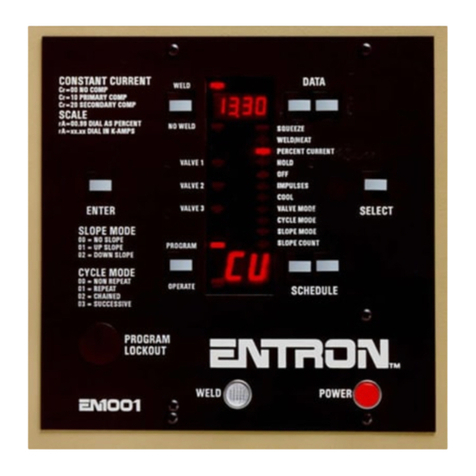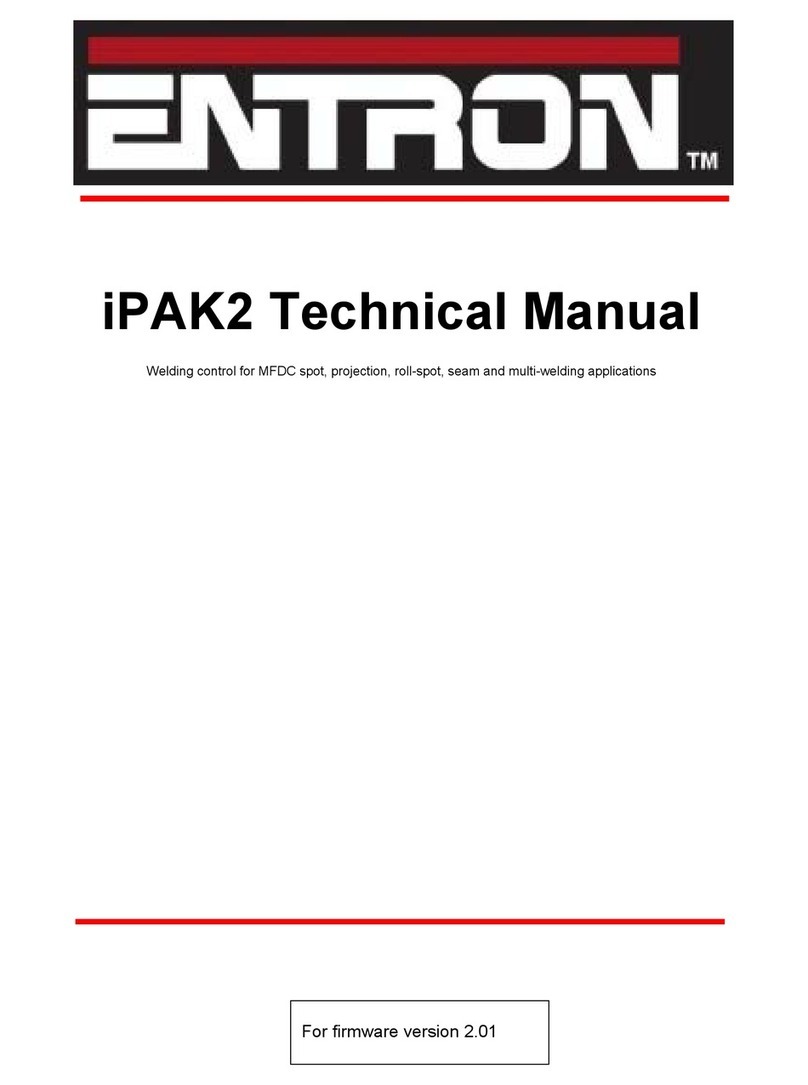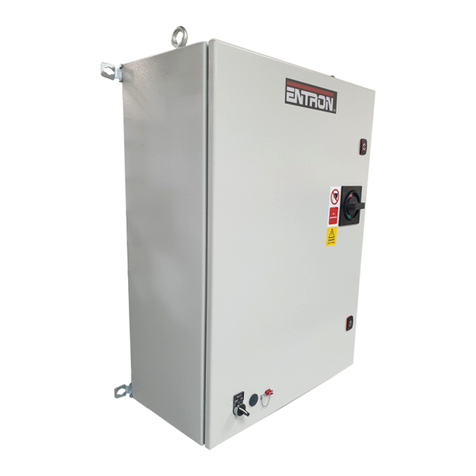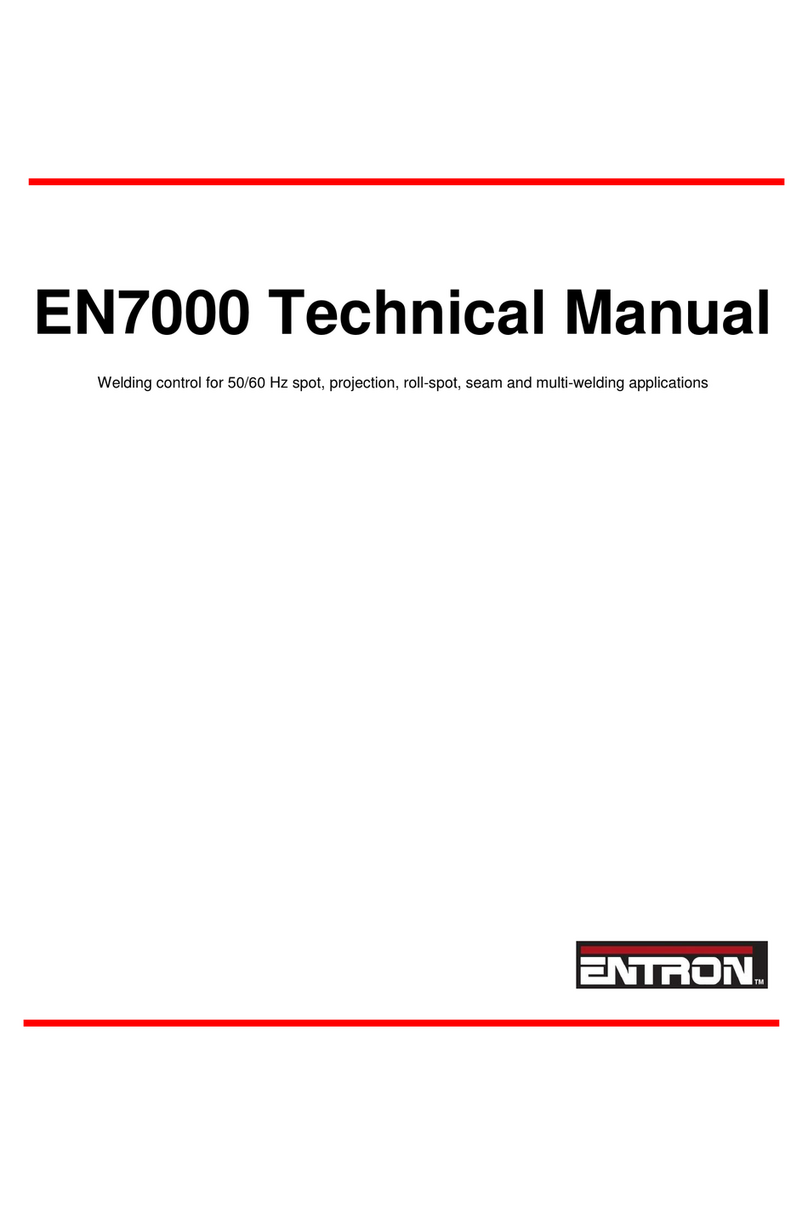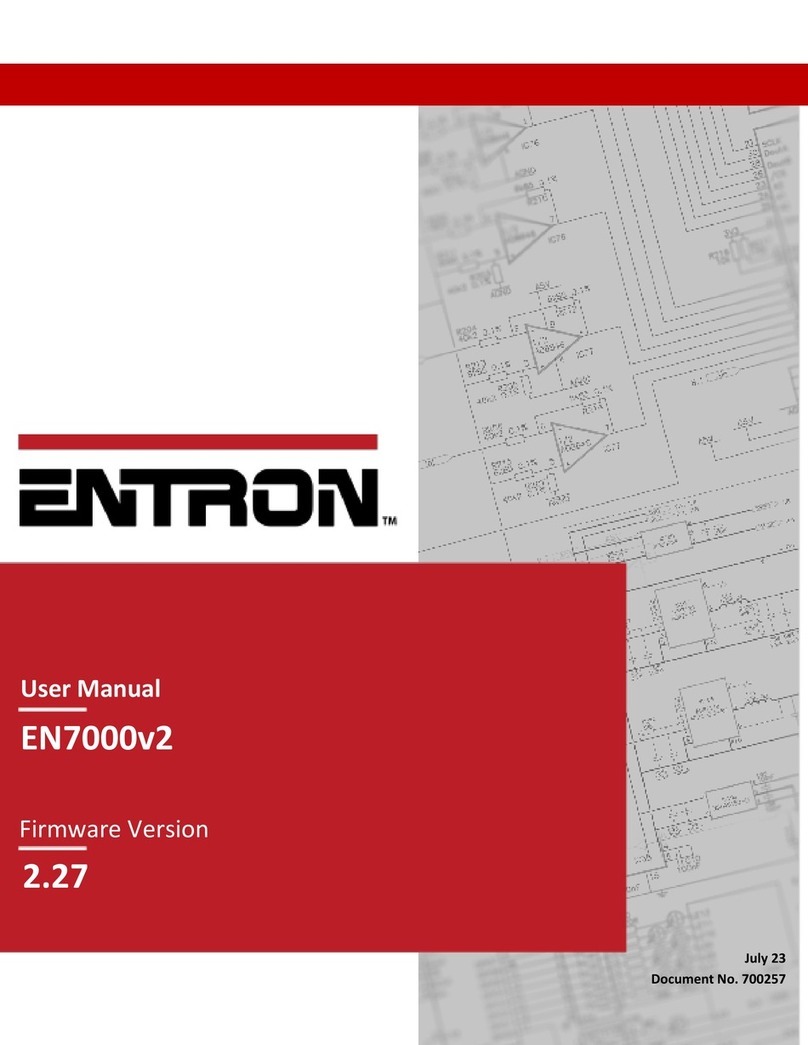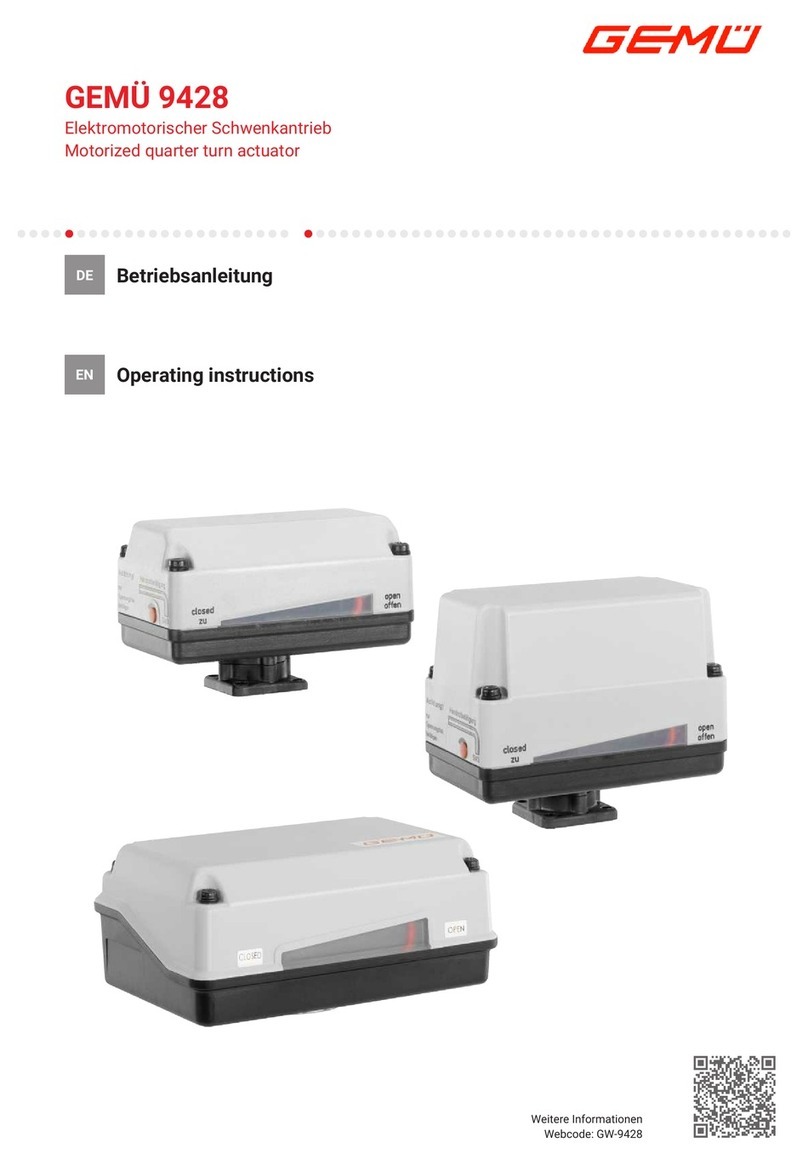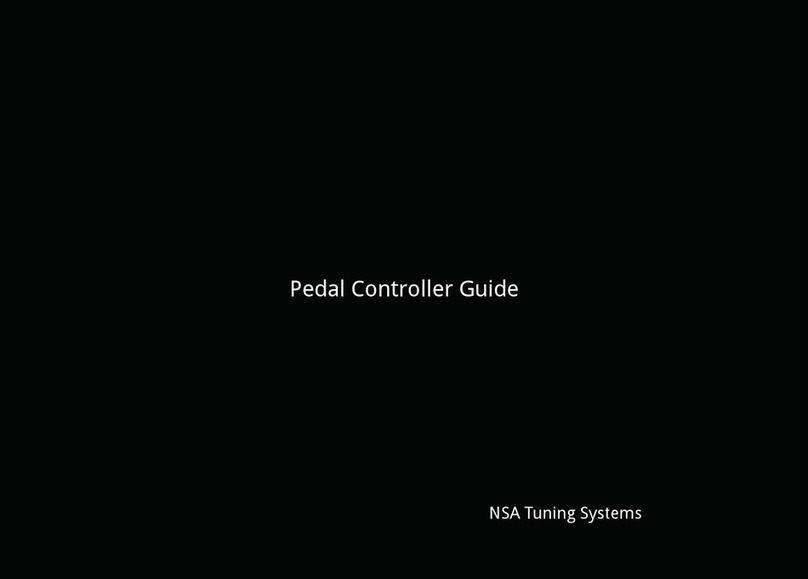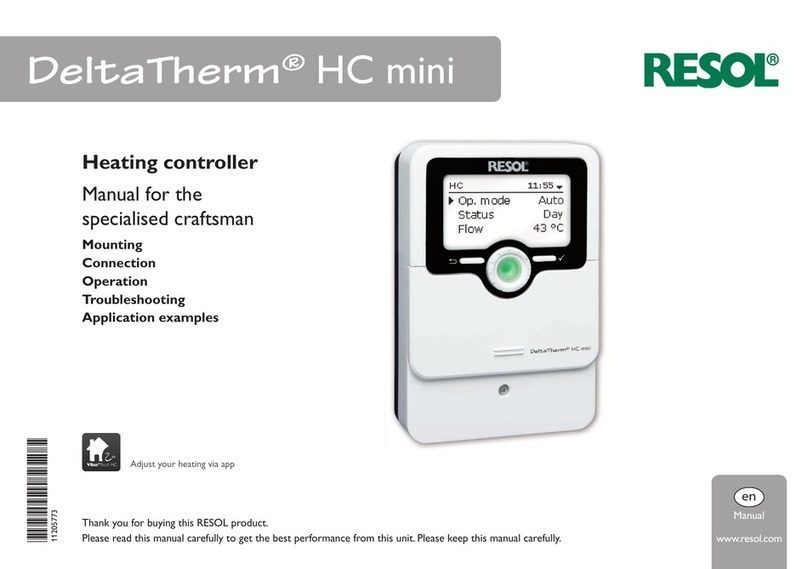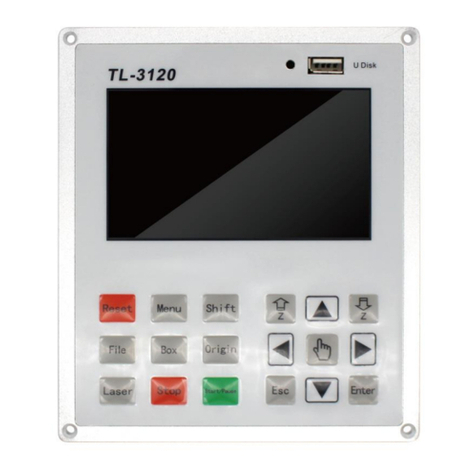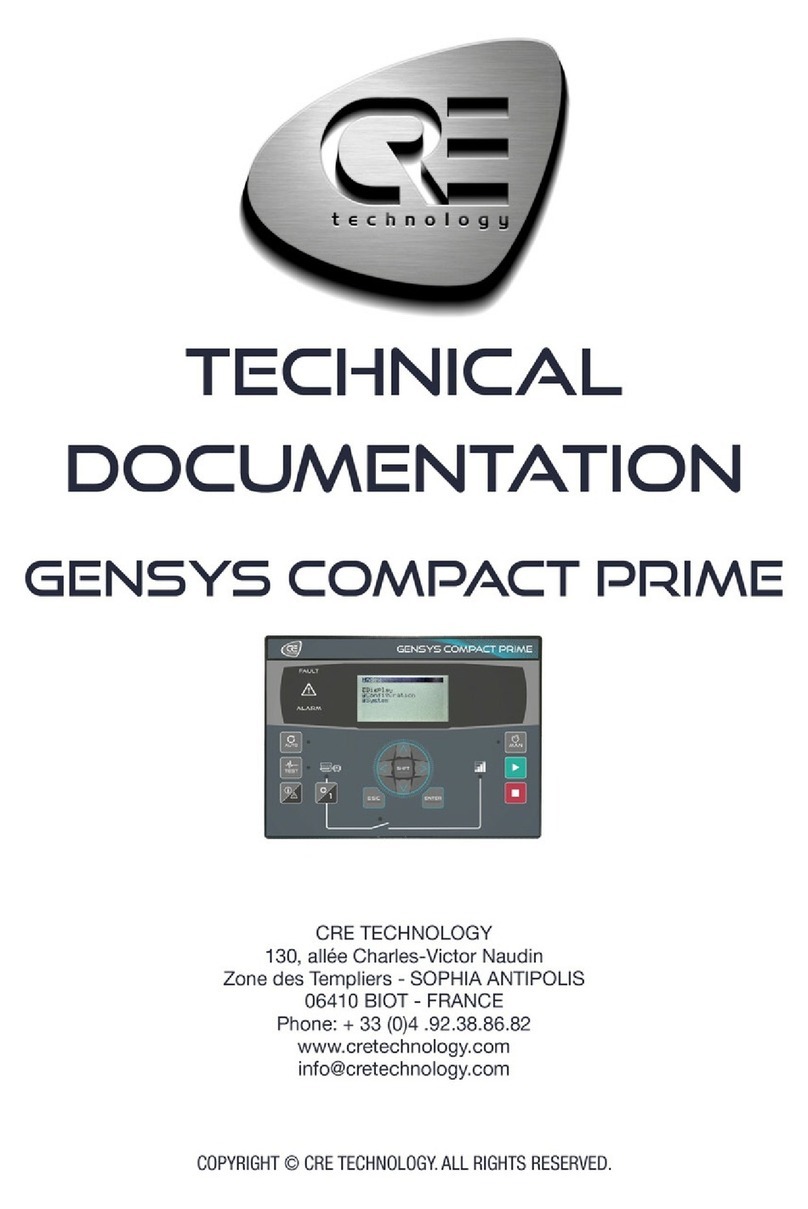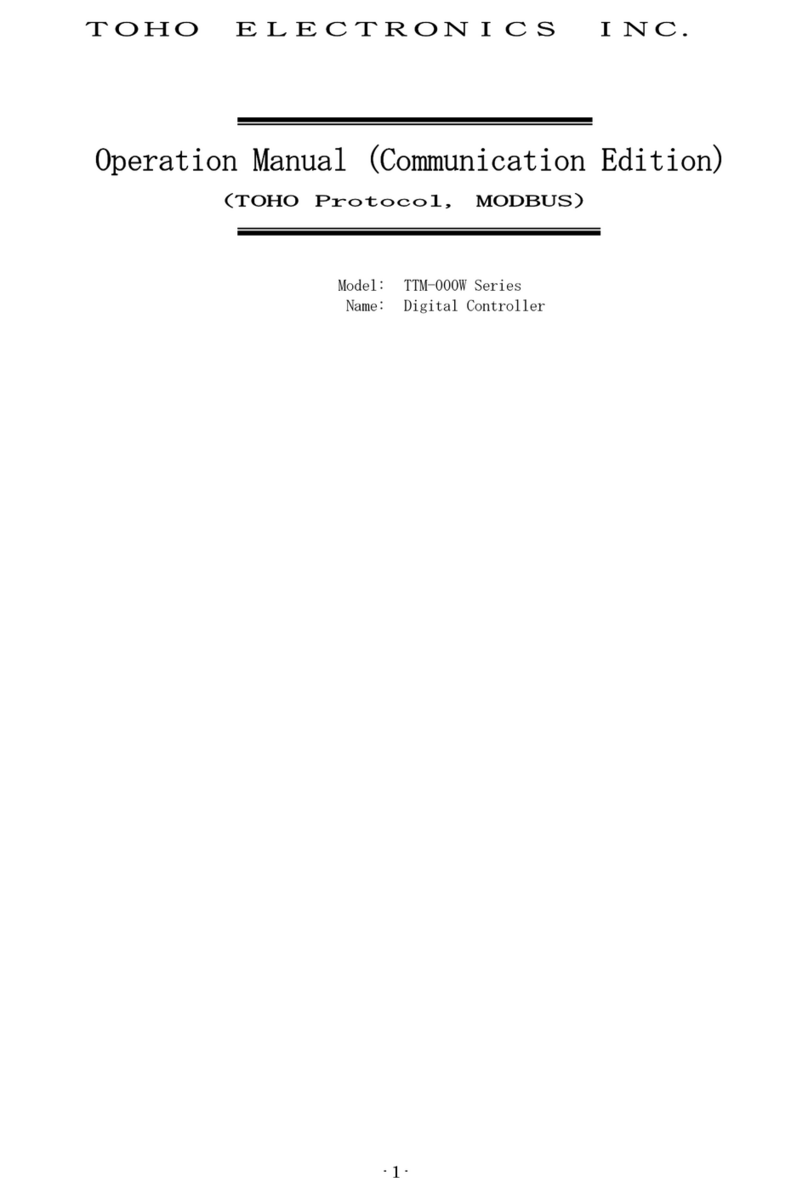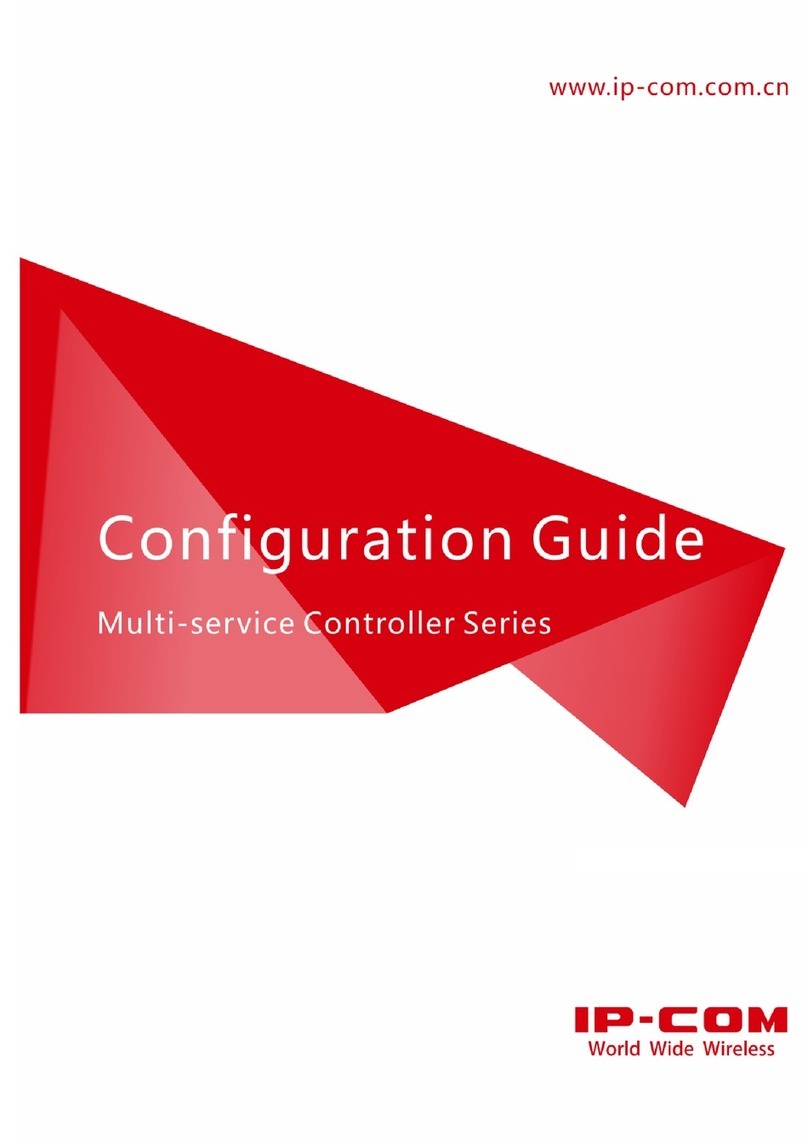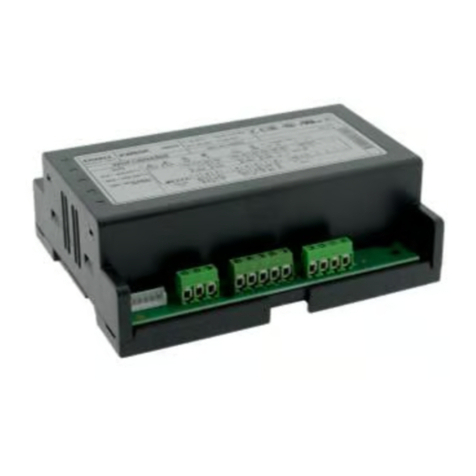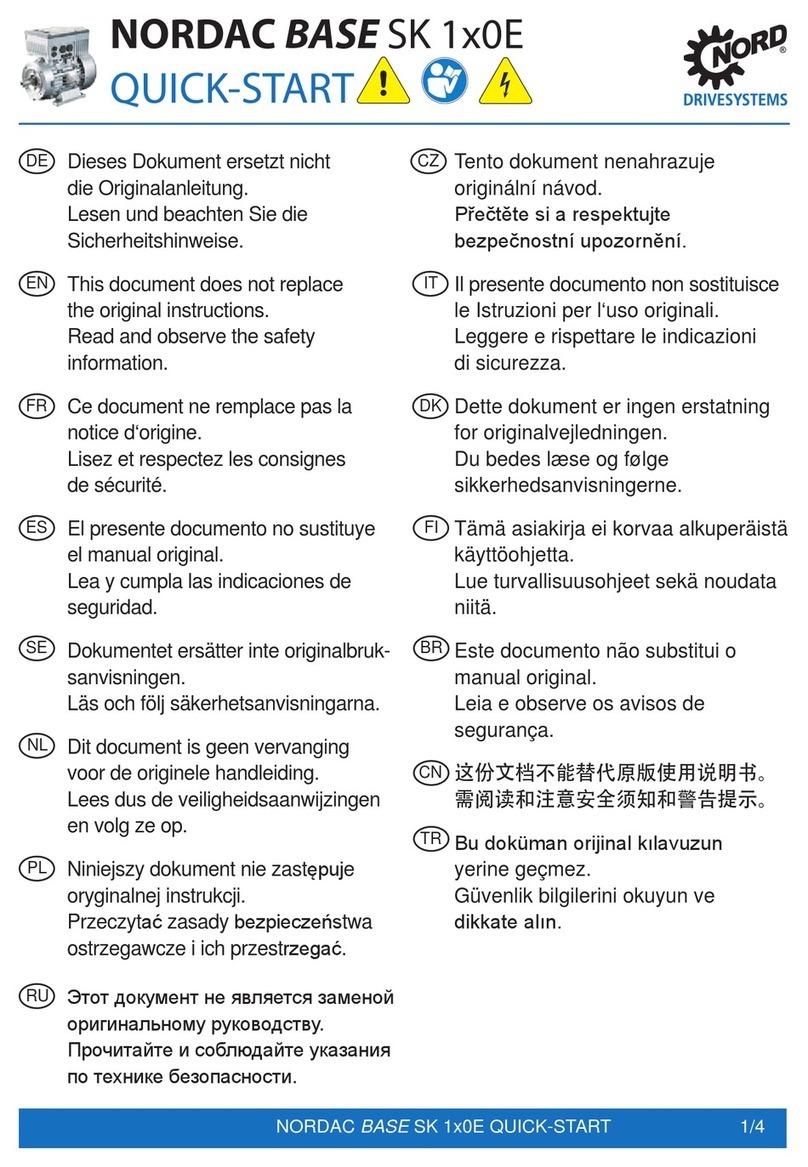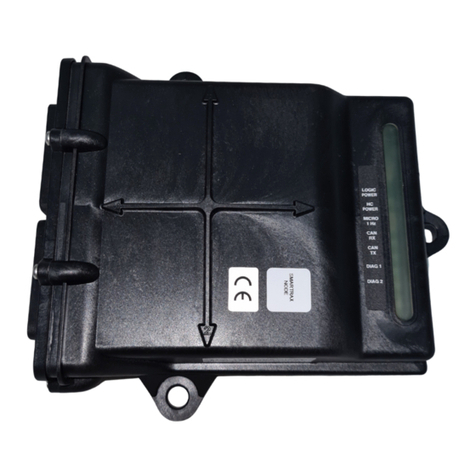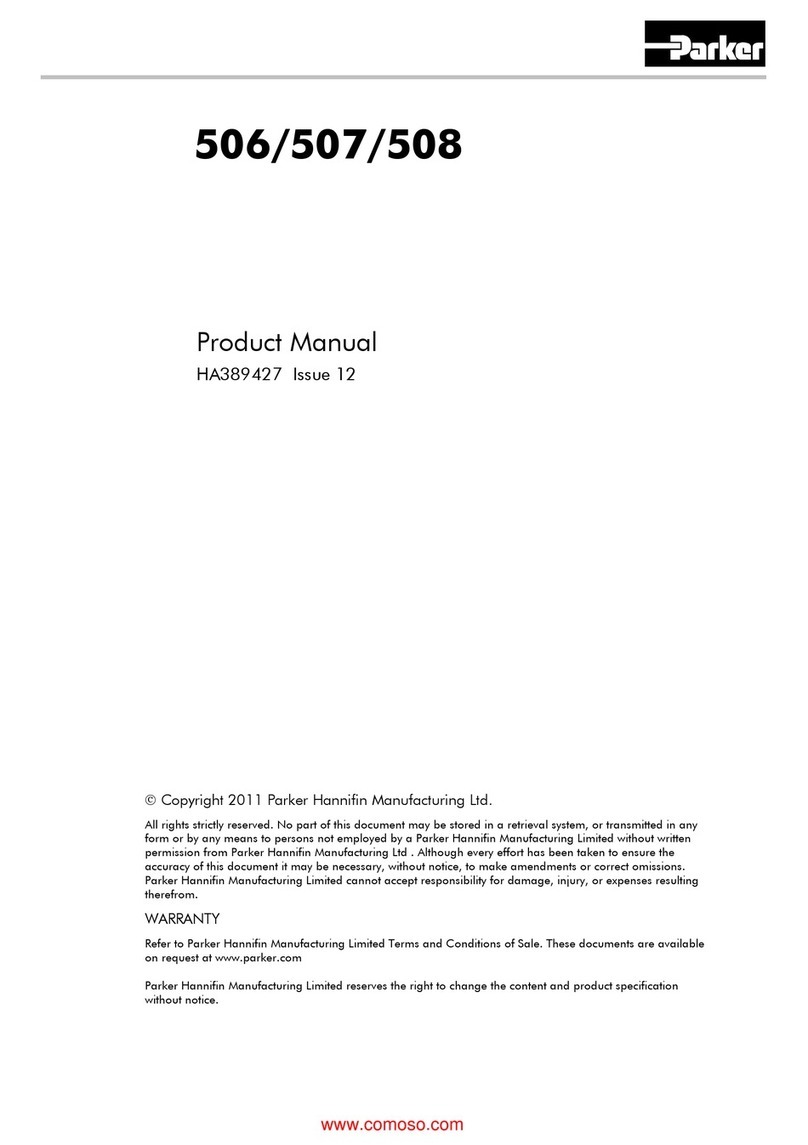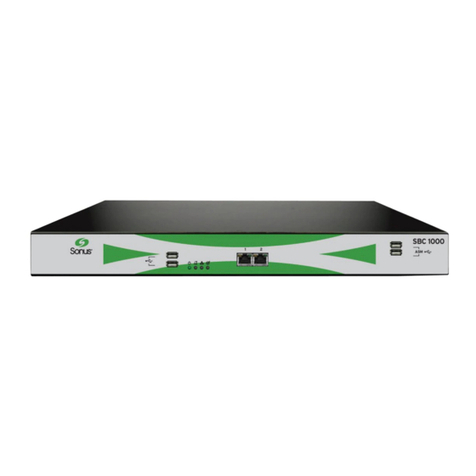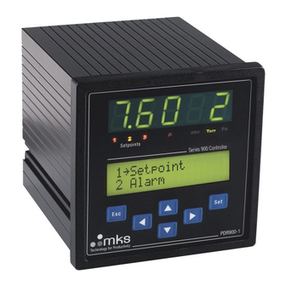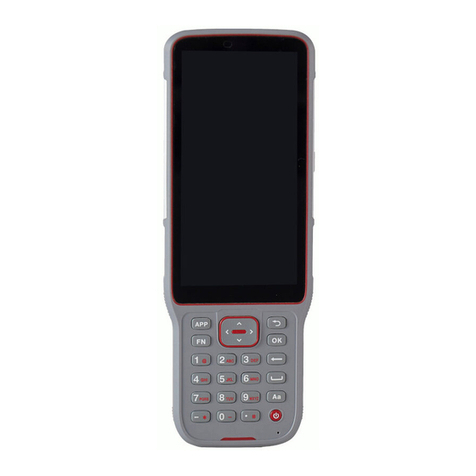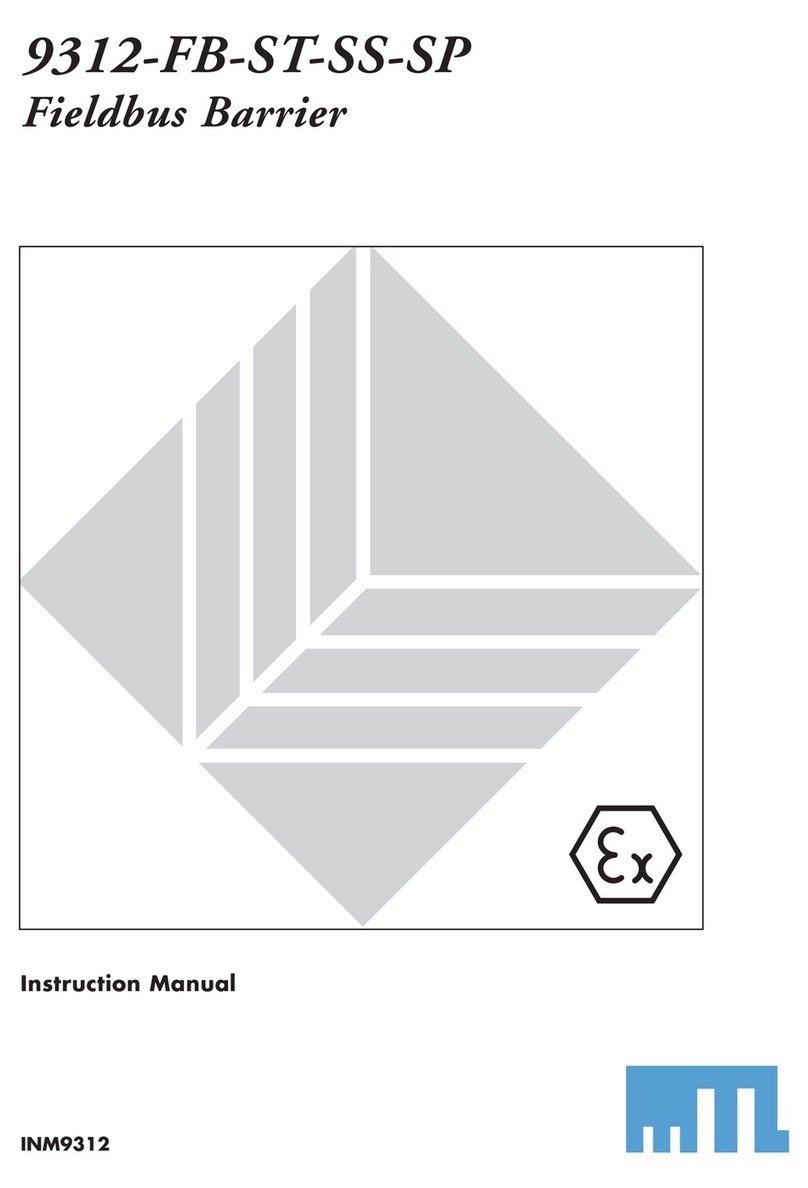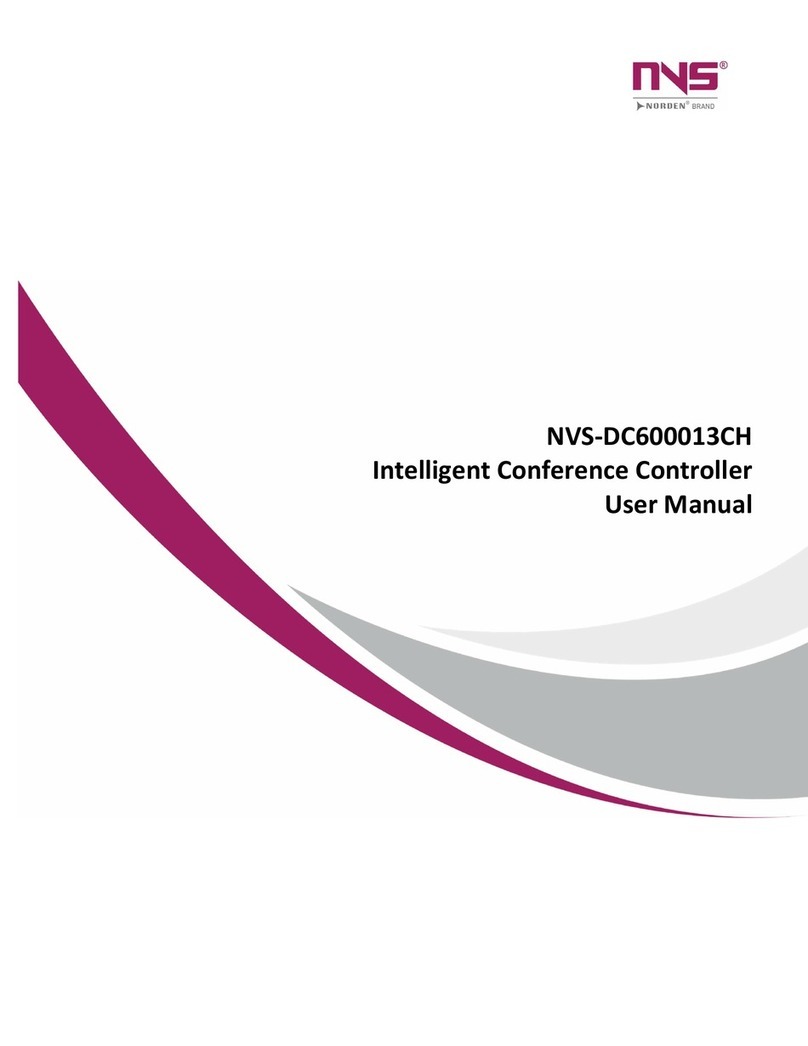Entron iPAK2 User manual

iPAK2
User Guide
Welding control for MFDC spot, projection, roll-spot, seam and multi-welding
applications.
For firmware version 2.04

iPAK2 User Guide
1
Document change record
Copyright © 2019 ENTRON and/or its affiliates. All rights reserved.
The information in this manual is subject to change.
ENTRON assumes no responsibility for any errors that may appear in this manual.
ENTRON assumes no responsibility for any injury, loss or damage caused by improper
installation, use or application of the iPAK2 welding control
The reproduction, transmission or use of this document or contents is not permitted without
express authority from ENTRON
ENTRON's trademarks and trade dress may not be used in connection with any product or service
that is not ENTRON's, in any manner that is likely to cause confusion among customers or in any
manner that disparages or discredits ENTRON. All other trademarks not owned by ENTRON are
the property of their respective owners, who may or may not be affiliated with, connected to, or
sponsored by ENTRON.
Issue Date Comment
2.00 27-02-19 Initial release
2.00.01 13-06-19 Minor errata corrected
2.00.02 19-06-19 Corrected weld program time range.
2.01 8-08-19 Added Presqueeze to all modes
2.02 19-09-19 Added programable blanking. Added C-Monitor
2.03 27-02-20 Includes iPAK2v2. Modified Seam sequence. Modified Analog control. Added Retry
feature.
2.04 16-09-20 Changed description of 2
nd
-stage Once/Every configuration parameter

iPAK2 User Guide
2
IMPORTANT SAFETY INSTRUCTIONS
READ ALL INSTRUCTIONS BEFORE USING THE iPAK2
WARNING
DO NOT DISASSEMBLE, REPAIR, OR MODIFY THE iPAK2. These actions can cause electric shock and fire.
Use only as described in this manual. Use only ENTRON recommended accessories and
replacement parts.
Stop operation if any problems occur. If the equipment is not working as it should, has been
dropped, damaged, left outdoors, or been in contact with water, contact ENTRON.
Only apply the specified power. Application of a voltage or current beyond the specified range
can cause electric shock or fire.
Do not use damaged plugs or connecting cables.
Keep water and water containers away from the iPAK2. Water ingress can cause a short circuit,
electric shock, or fire.
Do not insert objects into openings. Do not use with any opening blocked; keep free of dust and
debris.
Do not install the iPAK2 in any of the following environments
o damp environments where humidity is 90% or higher.
o dusty environments.
o environments where chemicals are handled.
o environments near a high-frequency noise source.
o hot or cold environments where temperatures are above 40°C or below 0°C, or
environments where water will condense.

iPAK2 User Guide
3
Table of Contents
Section Page
1. Introduction.................................................................................................................... 7
1.1. Part numbers........................................................................................................... 7
1.2. Features................................................................................................................... 8
1.3. Weld schedule parameters................................................................................... 9
1.4. Programming options .......................................................................................... 10
1.4.1. NetFlash.......................................................................................................... 10
1.4.2. WSP3 Pendant............................................................................................... 10
1.4.3. EtherNet/IP..................................................................................................... 10
1.4.4. Modbus.......................................................................................................... 10
1.5. Communications.................................................................................................. 11
1.6. Applications.......................................................................................................... 12
2. Weld Control................................................................................................................ 15
2.1. Sequence timing.................................................................................................. 15
2.2. Program options................................................................................................... 16
2.3. Current control ..................................................................................................... 17
2.3.1. PW mode ....................................................................................................... 17
2.3.2. CCu mode..................................................................................................... 17
2.3.3. CCC mode.................................................................................................... 17
2.4. Timing diagrams ................................................................................................... 18
2.4.1. Spot weld....................................................................................................... 18
2.4.2. Spot pulsation................................................................................................ 18
2.4.3. Spot repeat.................................................................................................... 19
2.4.4. Seam .............................................................................................................. 19
2.4.5. Roll-spot.......................................................................................................... 20
2.4.6. Second stage................................................................................................ 21
2.4.7. Retract............................................................................................................ 22
2.5. Force control......................................................................................................... 24
2.6. Valve control ........................................................................................................ 25
2.7. Multi-Electrode operation ................................................................................... 26
2.8. Program selection................................................................................................ 26
2.8.1. Internal program selection........................................................................... 26
2.8.2. External program selection.......................................................................... 26

iPAK2 User Guide
4
2.8.3. Program selection for Spot welding............................................................ 26
2.8.4. Program selecting for seam welding.......................................................... 26
2.9. Analog control...................................................................................................... 27
3. Multi-weld operation................................................................................................... 28
3.1. Multi-Electrode operation ................................................................................... 30
3.2. Cascade operation............................................................................................. 31
4. Electrode management............................................................................................. 32
4.1. Steppers................................................................................................................. 32
4.2. Counters................................................................................................................ 33
4.3. Current calibration............................................................................................... 34
4.3.1. Maximum Primary Current............................................................................ 34
4.3.2. Current measurement by built-in CT........................................................... 34
4.3.3. Current measurement by external toroid (spot weld only)...................... 35
4.4. CCC calibration................................................................................................... 36
4.5. Force calibration.................................................................................................. 37
5. Input/Output (I/O)....................................................................................................... 38
5.1. Inputs ..................................................................................................................... 38
5.2. Outputs.................................................................................................................. 39
5.3. Softstart.................................................................................................................. 39
5.4. Analog signals....................................................................................................... 40
5.4.1. Analog input Ch1.......................................................................................... 40
5.4.2. Analog output............................................................................................... 40
5.4.3. Analog input Ch2.......................................................................................... 40
5.4.4. Toroid.............................................................................................................. 40
5.5. Discrete interface................................................................................................. 41
5.5.1. Inputs.............................................................................................................. 41
5.5.2. Outputs........................................................................................................... 41
5.6. LED indicators ....................................................................................................... 42
5.6.1. Heartbeat LED (1).......................................................................................... 42
5.6.2. Ready LED (2)................................................................................................ 42
5.6.3. Sequence LED (3).......................................................................................... 42
5.6.4. Weld LED (4)................................................................................................... 42
5.6.5. Data Send/Receive LEDs (5…12)................................................................ 42
5.6.6. NS/MS LEDs..................................................................................................... 42

iPAK2 User Guide
5
6. Modbus......................................................................................................................... 43
6.1. Access types......................................................................................................... 43
6.2. Inputs to iPAK2...................................................................................................... 44
6.3. Outputs from iPAK2 .............................................................................................. 45
6.4. Parameter mapping............................................................................................ 49
6.4.1. Weld program parameters.......................................................................... 50
6.4.2. Electrode parameters .................................................................................. 53
6.4.3. Calibration parameters................................................................................ 54
6.4.4. Configuration parameters ........................................................................... 55
7. EtherNet/IP ................................................................................................................... 57
7.1. Functionality.......................................................................................................... 57
7.2. Ports ....................................................................................................................... 57
7.3. Status LEDs (MS & NS)........................................................................................... 57
7.4. Cyclic I/O (class 1 connection).......................................................................... 58
7.5. Parameter programming.................................................................................... 59
7.6. Interfacing with a PLC ......................................................................................... 59
8. Configuration............................................................................................................... 60
9. Duty cycle limiter......................................................................................................... 61
10. Status messages....................................................................................................... 62
11. History log.................................................................................................................. 63
12. Programming............................................................................................................ 64
12.1. Security .............................................................................................................. 64
12.1.1. PIN codes....................................................................................................... 64
12.1.2. Edit switch ...................................................................................................... 64
12.2. Programming with WSP3 pendant.................................................................. 65
12.2.1. Keypad........................................................................................................... 66
12.2.2. Diagnostic or Status screen.......................................................................... 66
12.2.3. Menus............................................................................................................. 67
12.2.4. Backup/Restore............................................................................................. 68
12.2.5. Initialise data.................................................................................................. 68
12.3. Programming with NetFlash............................................................................. 68
12.4. Programming with MODBUS............................................................................ 68
12.5. Programming with EtherNet/IP........................................................................ 68
13. Tutorials...................................................................................................................... 69

iPAK2 User Guide
6
13.1. Controlling an Air over Oil system................................................................... 69
13.2. Testing the weld current................................................................................... 70
13.2.1. Current monitor............................................................................................. 70
13.2.2. Conduction monitor (C-Monitor)................................................................ 70
13.3. Using the Valves to control a multi-head machine...................................... 71
13.4. Controlling a multi-welder ............................................................................... 74
13.5. Resetting Faults ................................................................................................. 76
13.5.1. WSP3............................................................................................................... 76
13.5.2. NetFlash.......................................................................................................... 76
13.5.3. Discrete input................................................................................................. 76
13.5.4. Bus input......................................................................................................... 76
13.6. Setting the IP address....................................................................................... 77
13.6.1. iPAK2v2........................................................................................................... 77
13.6.2. iPAK2............................................................................................................... 77
13.7. Updating the firmware..................................................................................... 80
14. Terminology.............................................................................................................. 81

iPAK2 User Guide
7
1. Introduction
The iPAK2 and iPAK2v2 controllers are suitable for MFDC spot, projection, roll-spot, seam and
multi-welding applications.
The controller supports:
pre-heat, main heat and post-heat intervals
force profiles
multi-air valve applications
multi-electrode applications
Multiple communication and control options are supported by a number of programming
methods. The Ethernet port supports simultaneous programming and control connection via a
single physical cable. iPAK2v2 includes integrated EtherNet/IP. For iPAK2, EtherNet/IP can be
provided via an optional plug-in adapter board.
Short-circuit proof outputs and a guided-contact pilot relay provides enhanced safety.
Connection to the power system is via a single ribbon cable. Analog inputs and outputs can be
used to drive a proportional air regulator valve for force control.
Operation in Standard mode provides a basic set of features for simple applications. Extended
mode adds advanced features for more demanding applications. Choose between Standard
or Extended features (See Configuration section). iPAK2 must be restarted after changing this
setting.
1.1. Part numbers
Model Part number
iPAK2 01-70-27
iPAK2v2 01-70-28

iPAK2 User Guide
8
1.2. Features
NetFlash programming
WSP3 programming
Ethernet
1
EtherNet/IP
2
RS232
RS485
MODBUS TCP/IP
MODBUS RTU
Analogue inputs
3
2
Analogue outputs
3
1
Discrete inputs 16
Discrete outputs
4
16
Weld programmes 256
Pre-heat
Main heat
Post-heat
6
Slope
Constant current
Cascade/Mux
6
8
Multi air valve
5,6
8
Aux valves 7
Force profile
5
Electrodes 8
Real-time clock
Data log (spot welds) 6000
Expansion slot
Analog control mode
6
1
Two simultaneous connections
2
Standard on v2 model, otherwise requires
plug-in adapter board.
3
0 to 10 V
4
24 V dc, short-circuit proof, monitored
5
Guided contact safety relay, monitored
6
Extended feature
The symbol is used throughout this manual to indicate
that the feature is available when the configuration parameter
Features is set to extended.
Extended

iPAK2 User Guide
9
1.3. Weld schedule parameters
Presqueeze
Squeeze
Pre-heat
Cool1
Upslope
Main heat
Cool2
Downslope
Pulses
Post-heat
1
Hold
Off
WAV selection
1
Aux valve control
Retract/Hi-lift
Electrode selection
1
Force profile
1
SCR selection
1
Current monitor
Conduction monitor
1
Force monitor
Spot weld
Roll-spot weld
1
Seam weld
1
1
Extended feature
The extended features option can be enabled for greater flexibility or
more demanding applications.

iPAK2 User Guide
10
1.4. Programming options
1.4.1. NetFlash
This PC-compatible program displays and allows
editing of all welding parameters and status
information.
In addition to programming, NetFlash provides
backup/restore functions for control data, live data
logging to a file and a utility for updating the firmware
in the iPAK2.
1.4.2. WSP3 Pendant
iPAK2 works with the same WSP3 pendant that is used
with EN7000, iPAK and WS2003. Access to all
parameters is provided, plus diagnostic indication.
1.4.3. EtherNet/IP
On v2 models, EtherNet/IP is integrated as standard.
On other models, an optional adapter card can be
fitted to the expansion port, providing full data access
via the EtherNet/IP protocol.
1.4.4. Modbus
A PLC or HMI MODBUS master can be used to program,
control and monitor iPAK2s. All parameters are directly
mapped to MODBUS registers for easy access. Both
MODBUS-TCP/IP (Ethernet) and MODBUS-RTU (RS485)
protocols are supported.

iPAK2 User Guide
11
1.5. Communications

iPAK2 User Guide
12
1.6. Applications
Standard machines, portable/manual guns, robot guns, multi-welders and seam welders.
Standard machine.
Multi-head machine. Up to eight cylinders. Cascade or independent firing.

iPAK2 User Guide
13
Multi-welder. Up to 8 transformers and cylinders. Cascade or independent firing.

iPAK2 User Guide
14
Seam welder with one transformer.
Seam welder with a multi-tap transformer.

iPAK2 User Guide
15
2. Weld Control
iPAK2 controls the weld sequence by using the I/O in conjunction with the welding parameters. The
parameters are stored in programs so that different materials and machine sequences can be used.
There are 256 weld programs.
2.1. Sequence timing
Parameter Units Range Description
Presqueeze ms 0 - 1999 The time for the electrodes to close onto the work piece.
Squeeze ms
0 - 1999
The time between the initial application of the electrode
force and the first application of welding current
Pre-heat
1
ms
0 - 1999
The pre-heat welding current is applied
Cool1
1
ms
0 - 1999
The material is allowed to cool with electrode force
applied
Upslope ms
0 - 1999
Welding current is increased during this time
Main heat ms
0 - 1999
The main welding current is applied
Cool2
2
ms
0 - 1999
The material is allowed to cool with electrode force
applied
Downslope ms
0 - 1999
Welding current is decreased during this time
Post-heat
3
ms
0 - 1999
The post-heat welding current is applied
Hold ms
0 - 1999
Electrode force continues after the welding current has
finished
Off
4
ms
0 - 1999
Electrode force is released until the next sequence begins
1
Pre-heat program option must be enabled to use this feature
2
Pulsations program option must be greater than 1 to use this feature
3
Post-heat program option must be enabled to use this extended feature
4
Repeat mode or Roll-spot program option must be enabled to use this feature
Upslope can be used on hard, irregular shaped, oxidized and
aluminium materials
Downslope can be used to reduce marking and embrittlement
Pre-heat and Post-heat can be used on hard or heat resistant
m
e
t
a
l
s

iPAK2 User Guide
16
2.2. Program options
Each weld program has a number of optional features.
Parameter Range Description
Pre-heat on/off Enables or disables the Pre-heat parameters
Post-heat
2
on/off Enables or disables the Post-heat parameters
Pulsations 1 - 99 The number of times the Main heat – Cool2 interval is repeated
Link
2
on/off The next welding program will be started automatically if the
input signals are maintained
Repeat on/off The welding program will be repeated if the input signals are
maintained
Force profile on/off Use multiple force values during the weld
Inhibit
1
on/off An inhibited program will not run
C-Monitor shunt
2
on/off The measured conduction will be checked against the C-Monitor
shunt limit
C-Monitor wear
2
on/off The measured conduction will be checked against the C-Monitor
wear limit
Retry
2
On/off Weld schedule will re-run if a Low Main Current is detected – spot
welds only.
1
If an inhibited program is not linked then attempting to run it will produce an error message. If
the program is linked, then the program will be skipped and the next linked program will run.
This feature may be used to temporarily disable a program in a cascade.
2
Extended mode must be set in Configuration to use
this feature
Pulsations can be used to temper the material, control nugget
growth and reduce electrode wear.
The START signal must be maintained for the full duration of the
sequence if pulsations are set to 10 or more, otherwise the
sequence will terminate after 10 pulses.

iPAK2 User Guide
17
2.3. Current control
The weld programs contain the following current control parameters.
Parameter Units Range Description
Pre-mode
1
PW/CCu/CCC Operating mode of the Pre-heat interval
Pre-heat
1
% 0.0 – 99.9 The % heat used during the Pre-heat interval in
PHA mode
Pre-current
1
kA 0 – 500 The current used during the Pre-heat interval in
CCC mode. Set point for monitoring.
Main mode PW/CCu/CCC Operating mode of the Main heat interval
Main heat % 0.0 – 99.9 The % heat used during the Main heat interval in
PHA mode
Main current kA 0 – 500 The current used during the Main heat interval in
CCC mode. Set point for monitoring.
Post mode
2
PW/CCu/CCC Operating mode of the Post-heat interval
Post heat
2
% 0.0 – 99.9 The % heat used during the Post-heat interval in
PHA mode
Post current
2
kA 0 – 500 The current used during the Post-heat interval in
CCC mode. Set point for monitoring.
Test current on/off Each current can be tested between limits
High limit % 0 - 99 Current high limit
Low limit % 0 - 99 Current low limit
1
Pre-heat program option must be enabled to use this feature
2
Post-heat program option must be enabled to use this extended feature.
2.3.1. PW mode
PW (Pulse-width) mode. The heat adjusts the output pulse-width. No current regulation
takes place. The current parameter is used for monitoring only
2.3.2. CCu mode
CCu (Constant Current, uncalibrated) mode. The heat adjusts the output current
within the range set by the configuration parameter Ip limit. Current is regulated but
the current parameter is used for monitoring only.
2.3.3. CCC mode
CCC (Constant Current, calibrated) mode. The current parameter sets the output
current directly (in kA). Current is regulated. The current parameter is also used for
monitoring. See Electrode management – CCC calibration.

iPAK2 User Guide
18
2.4. Timing diagrams
2.4.1. Spot weld
Pulsations = 1, Force profile = Off.
EOSO/P
WAVO/P
ForceO/P
Current
Presqueeze
Squeeze
Mainheat
Hold
Cool1
Pre‐heat
Upslope
Downslope
STARTI/P
Post‐heat
2.4.2. Spot pulsation
Pre-heat = 0, Cool1 = 0, Post-heat = 0, Pulsations = 3, Force profile = off.
EOSO/P
WAVO/P
ForceO/P
Current
Presqueeze
Squeeze
Mainheat
Hold
Upslope
Downslope
STARTI/P
Mainheat
Mainheat
Cool2
Cool2

iPAK2 User Guide
19
2.4.3. Spot repeat
Pre-heat = 0, Cool1 = 0, Upslope = 0, Downslope = 0, Post-heat = 0, Pulsations = 1, Force
profile = Off.
WAVO/P
ForceO/P
Current
Presqueeze
Squeeze
Hold
STARTI/P
Mainheat
Off
Hold
Off
Squeeze
Hold
Squeeze
Mainheat
Mainheat
2.4.4. Seam
MOTORO/P
WAVO/P
ForceO/P
Current
Presqueeze
Squeeze
Mainheat
Hold
Cool1
Pre‐heat
Upslope
Downslope
STARTI/P
Post‐heat
Mainheat
Mainheat
Mainheat
Cool2
Cool2
Cool2
The position of rising edge of the MOTOR output depends on the selection of the
Second Stage configuration parameter.
Continuous seam operation is obtained when Cool 2 = 0.
A spot weld (in Seam mode) can be produced by using the pre-heat with
Main heat = 0.
Extended
Other manuals for iPAK2
1
This manual suits for next models
3
Table of contents
Other Entron Controllers manuals
